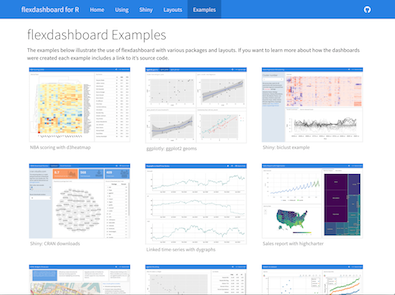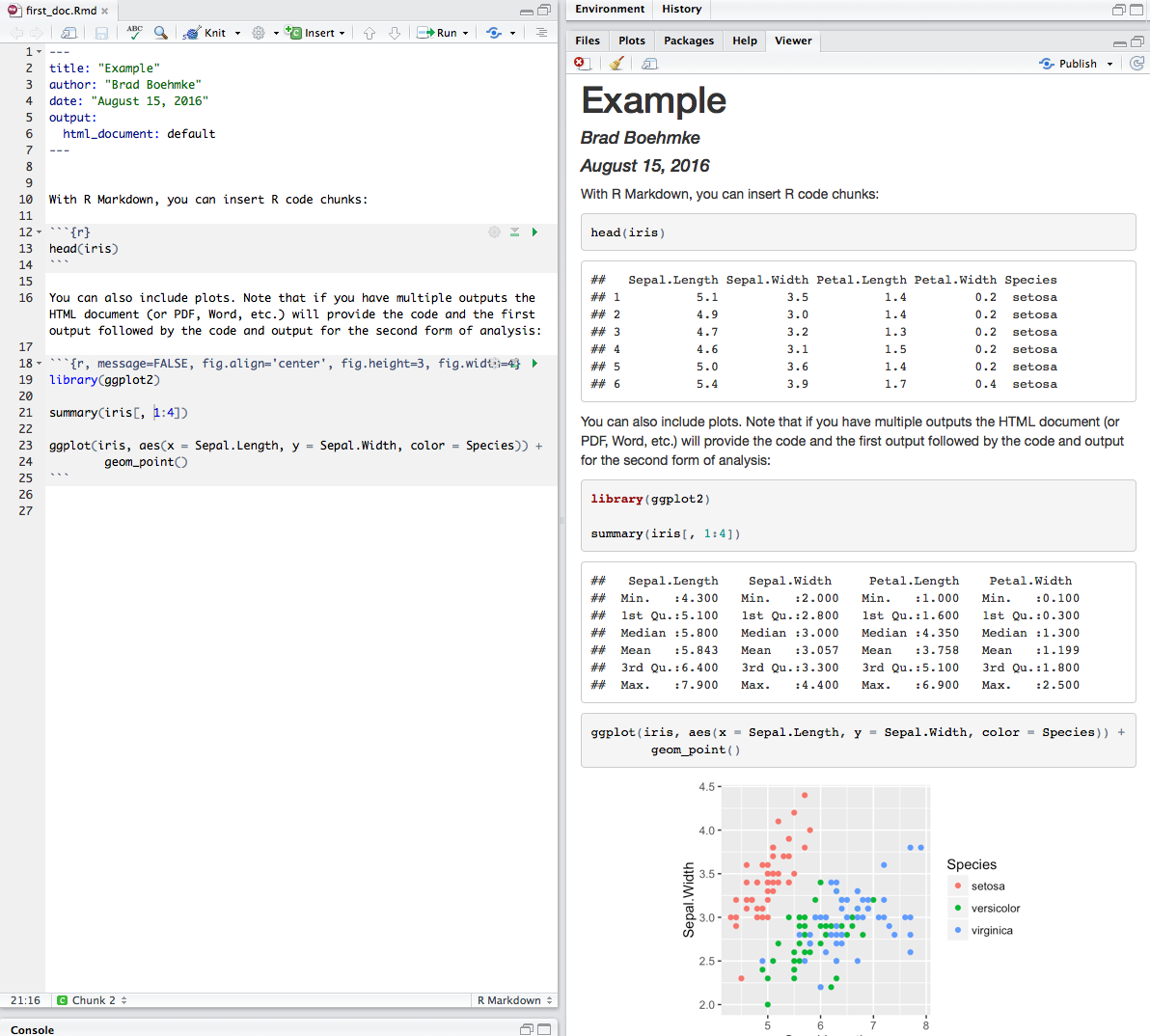
This is a book on rmarkdown, aimed for scientists. It was initially developed as a 3 hour workshop, but is now developed into a resource that will grow and change over time as a living book.
This book aims to teach the following:
- What is R Markdown? “An authoring framework for data science” – R Markdown creators. R Markdown allows us to create reproducible documents that weave narrative text together with R code and the output it produces when executed. For example, here is an R code block inserted into the R Markdown file that generates this slide show.
- R Markdown Cheat Sheet learn more at rmarkdown.rstudio.com rmarkdown 0.2.50 Updated: 8/14 1. Workflow R Markdown is a format for writing reproducible, dynamic reports with R. Use it to embed R code and results into slideshows, pdfs, html documents, Word files and more. To make a report.
- Sep 30, 2020 A visual markdown editor that provides improved productivity for composing longer-form articles and analyses with R Markdown. New Python capabilities, including display of Python objects in the Environment pane, viewing of Python data frames, and tools for configuring Python versions and conda/virtual environments.
Ich versuche, einen Bericht in R-Markdown zu erstellen, der die Abschnitte geordnet hat. Im having a problem (I believe related to encoding). When I run my code in Rstudio it works and outputs the expected result. When I try to knit HTML document, it gives an error (object not found.
- Getting started with your own R Markdown document
- Improve workflow:
- With RStudio projects
- Using keyboard shortcuts
- Export your R Markdown document to PDF, HTML, and Microsoft Word
- Better manage figures and tables
- Reference figures and tables in text so that they dynamically update
- Create captions for figures and tables
- Change the size and type of figures
- Save the figures to disk when creating an R Markdown document
- Work with equations
- Inline and display
- Caption equations
- Reference equations
- Manage bibliographies
- Cite articles in text
- Generate bibliographies
- Change bibliography styles
- Debug and handle common errors with R Markdown
- Next steps in working with rmarkdown - how to extend yourself to other rmarkdown formats

0.1 Why write this as a book?
There are many great books on R Markdown and it’s various features, such as “Rmarkdown: The definitive guide”, “bookdown: Authoring Books and Technical Documents with R Markdown”, and “Dynamic Documents with R and knitr, Second edition”, and Yihui Xie’s thesis, “Dynamic Graphics and Reporting for Statistics”.
So why write a book?
Good question. The answer is that writing this as a book provides a way for me to structure the content in the form of a workshop, in a way suitable for learning in a few hours.
0.2 How to use this book
This book was written to provide course materials for a 3 hour course on R Markdown.
We worked through the following sections in the book in 3 hours:
With the remaining sections being used as extra material, or have since been written after the course:

Course materials can be downloaded by using the following command from the usethis package:
0.3 Where has this course been taught?
Pnach files for pcsx2 2016. So far I have taught this rmarkdown for science course at the following locations:
- 2018
- Melbourne, November for SSA Victoria
- 2019
- Melbourne, April, for Monash University
- Canberra, July, for SSA Victoria
- Melbourne, November, for AIMOS2019
- Melbourne, December, for Plant Pathology Conference
- 2020
- Seattle, February, for University of Washington
0.4 Licence
Install Rmarkdown In Rstudio
Microsoft sidewinder joystick driver for mac. This work is licensed under a Creative Commons Attribution-NonCommercial 4.0 International License.
